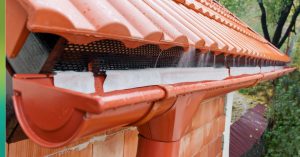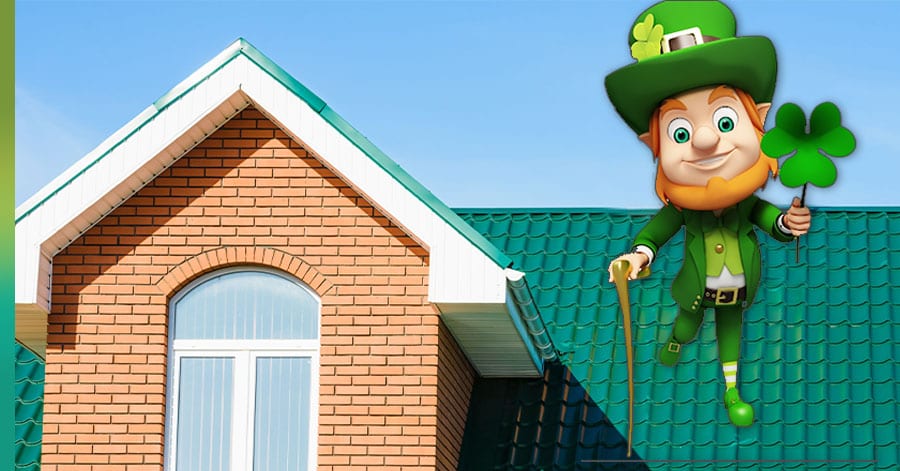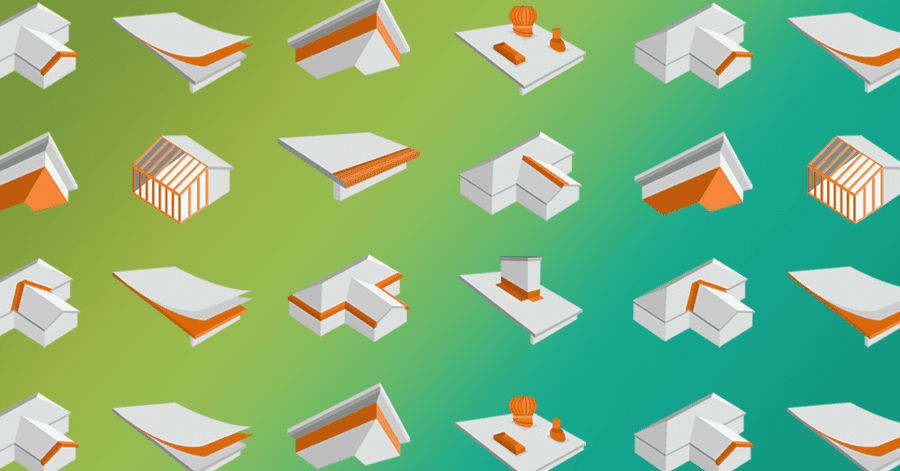Roof discoloration comes in many forms. What commonly causes irregular variations in roof color are issues related to the age of the materials. But, some causes are more sinister. No, we’re not talking about impact damage from hail, staining from wet leaves, nor whimsical patches of moss, like that which grace a cottage in a child’s storybook. No, we’re talkin’ the B-word. BACTERIA!
Neither plant nor animal, bacteria takes its own place in the kingdom of living things. It’s not a fungus and it’s not like seaweed, which is a protista. Rounding out the order of living things is archaea, but our gut instinct tells us that isn’t bacteria either — although archaea plays a role in our stomach by aiding digestion! No, bacteria is it’s own thing and it’s found a way to screw up roof shingles.
The bacteria that causes those streaky light and dark stains on a roof is called gloeocapsa magma. Its name has nothing to do with volcanoes (as the term magma would suggest), but it sure can erupt and when it does, it’s time to take action!
If you’ve ever noticed curious-looking stains on your roof or on someone else’s, it may very well be an eruption of gloeocapsa magma. It looks pretty innocent… nothing a little roof cleaning couldn’t handle, but there’s more to it.
Rumblings of gloeocapsa magma began rather recently, in the 1990’s, when property owners started to wonder what was happening to their roofs. Even the newest roofs were developing unsightly, streaky patterns of discoloration. Most roofing pros weren’t sure what it was, either. The bacteria wasn’t something visually familiar, like green mold, yet here was a monster that was essentially eating away at roof shingles!
Gloeocapsa magma’s diet favors moisture and calcium carbonate. Calcium carbonate is an ingredient in a number of building materials including concrete blocks, and yes, roofing shingles! The chemical compound itself has a powdery white appearance. The bacteria seeks it out and accumulates next to the calcium carbonate in the asphalt shingling. It then appears as an ominous dark stain, plaguing the roofing material like The Black Death! The discoloration takes on a streaky shape over time, simply due to gravity pushing the feeding frenzy downslope.
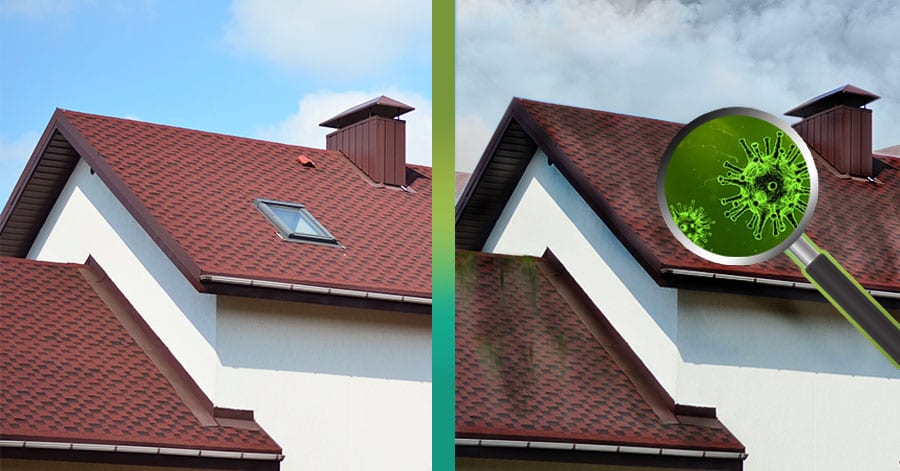
Does this have anything to do with Global Warming?
Nowadays, it seems like all the world’s problems lead back to one thing… global warming! While the Earth may indeed be getting warmer, it’s hardly an excuse for the weight you put on over Thanksgiving or the fuzzy picture you’re getting on your TV screen. But when it comes to bacteria on your roof, guess what? Yep… global warming has a bit to do with it. While gloeocapsa magma was first diagnosed as a roof issue in the southeastern United States, it’s believed now that gradually warming temperatures could be the reason roofers are starting to see the proliferation of gloeocapsa nationwide.
Conquering the Black Death
Luckily, gloeocapsa magma can be mitigated by cleaning the roof with special solvents containing sodium hypochlorite or copper sulfate. Roofing contractors apply the treatment with a hose at low pressure, so as not to further damage the roof by displacing the granules on the surface of asphalt shingles or mistakingly shooting water up under overlapping material. Treating roofs in this way doesn’t promise complete eradication, however. The bacteria, which is carried by wind and even by animals, can reestablish itself on a roof. So, wherever the issue is occurring, regular roof inspections, once every two or three years at least, can help ensure the long, healthy, bacteria-free life of a roof.
Material innovations
The leading roofing product manufacturers are always on the cutting-edge of construction technology and innovation. Numerous manufacturers now offer materials that are resistant to algae and bacteria, such as GAF’s StainGuard Plus and CertainTeed’s StreakFighter. Gloeocapsa-resistant components are built into the shingle and usually contain granules filled with copper particles which are time-released to prevent algae and bacteria stains for years. Other manufacturers making materials and coatings that resist algae and bacteria include Atlas, Tamko, Polyglas, Owens Corning, IKO, and Malarkey.
Copper strips installed on the ridge lines of a roof have also proven effective in preventing algae and bacteria staining.
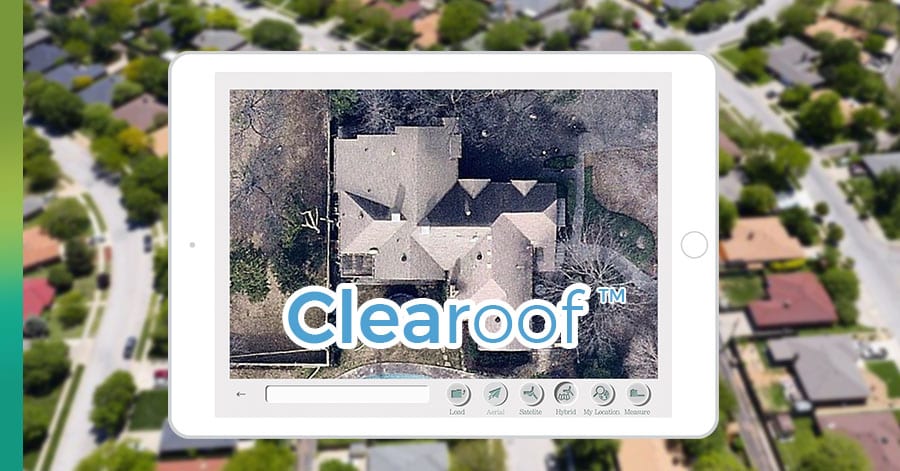
How technology can help spot the spots
Today’s top roofing software solutions, like iRoofing, contain imaging tools that provide roofing contractors overhead views of almost any residential and commercial property. Similar to Google Maps/Google Earth, the images come from satellites circling the globe. While satellite images can’t always provide a crystal clear image of the roof — enough to spot gloeocapsa magma issues — the software’s street view imagery can be more than enough to determine if a roof is plagued by bacterial growth. And, iRoofing has a Clearoof™ option. Clearoof™ consists of high-resolution images taken from specially-equipped aircraft. Contractors can select from a number of overhead images captured recently as well as from months or seasons prior to the most recent pictures.
If satellite images, street views, or high-resolution aerial images from Clearoof™ aren’t enough to decipher rooftop bacterial staining, iRoofing software works seamlessly with drones. Roofing contractors connect their app-enabled device with their drone. Then, from their handheld device, they can snap pictures and take video from the drones on board camera, getting close enough to diagnose any bacteria- or algae-related issues.
Of course, roofers can climb onto the roof, as well, although build up of the microorganisms addressed in this article can make that job more hazardous than it normally is, since these growths can make the roof surface very slippery.
With the images captured from roofing software, contractors can demonstrate to homeowners exactly what problems are unfolding on their roofs. And, when satellite or aerial images can provide enough evidence, the diagnosis can be performed before the contractor visits the property!


